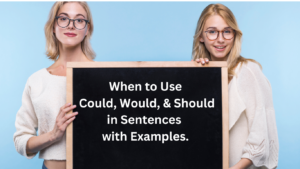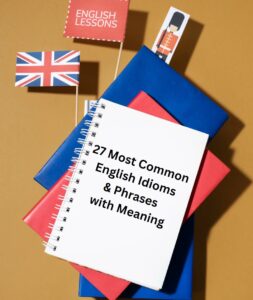Introduction to the use of Am, Is, and Are in sentences

In the English language, the verbs “am,” “is,” and “are” play a crucial role in constructing sentences and expressing various states of being. These verbs, known as forms of the verb “to be,” are essential for describing characteristics, locations, and conditions. However, their proper usage can often be a source of confusion, especially for language learners.
In this comprehensive blog, we will explore the usage of “am,” “is,” and “are” in sentences, providing clear explanations, rules, and numerous examples to solidify your understanding. So, grab your linguistic compass, and let’s set sail on this voyage of grammatical enlightenment!
If you want to practice ‘am’, ‘is’, ‘are’ in real life conversations, you can download the AceFluency App where you will get daily FREE practice talk time to connect 1:1 with your co-learners every day. It’s the best place to practice English for FREE.

Use of “Am” in Sentence
Let’s start our adventure with the first person singular: “am.” This mighty verb is the linguistic embodiment of self-expression, allowing us to describe our personal states of being and existence.
Rule of using “Am” in sentences
The rule for using “am” is as straightforward as a calm sea: it should be used when the subject of the sentence is the first person singular pronoun “I.” For example:
– I am a student, sailing through the vast ocean of knowledge.
– I am hungry for more linguistic adventures.
– I am excited about the upcoming grammar expedition.
It’s worth noting that “am” is exclusively used with the first person singular subject “I” and cannot be used with any other subject. Attempt to do so, and you’ll find yourself adrift in a sea of grammatical chaos!
Sentences using “Am” and Exercise
Here are some examples of sentences using the verb “am,” followed by a challenging exercise to test your newfound knowledge:
1. I am tired after a long day of language learning.
2. Am I the only one who finds this grammar journey exhilarating?
3. I am grateful for the guidance of experienced linguists.
4. As a language enthusiast, I am responsible for expanding my linguistic horizons.
5. I am not sure about the answer to that complex grammar question.
Exercise: Fill in the blanks with the correct form of “Am” or “Is”:
1. I _____ a writer, and my passion _____ storytelling.
2. _____ you the one who asked about verb conjugations?
3. The cat _____ sleeping on the couch, and I _____ trying not to disturb it.
4. My friend _____ an avid reader, but I _____ more interested in grammar studies.
5. This exercise _____ challenging, but I _____ determined to master it.
Also Read : When To Use “Could”, “Would”, and “Should”
Use of “Is” in Sentence
Our next stop on this grammatical voyage is the realm of the third person singular: “is.” This trusty verb is the linguistic anchor that helps us describe the states of being and existence for singular nouns, pronouns like “he,” “she,” “it,” or singular noun phrases.
Rule of using “Is” in sentences
The rule for using “is” is as clear as a calm sea: it should be used when the subject of the sentence is a third person singular noun, pronoun, or noun phrase. For example:
– He is a doctor, healing the linguistic ailments of his patients.
– The book is interesting, taking us on a journey through the depths of language.
– My dog is playful, always ready for a grammar-themed game of fetch.
It’s crucial to remember that “is” is used exclusively with third person singular subjects and cannot be used with first person singular (“I”) or plural subjects. Stray from this rule, and you’ll find yourself lost in a linguistic maze!
Sentences using “Is” and Exercise
Here are some examples of sentences using the verb “is,” followed by a challenging exercise to test your expertise:
1. She is a talented artist, painting with the vibrant colours of language.
2. The weather is beautiful today, perfect for a linguistic picnic.
3. This restaurant is highly recommended for its delectable grammar-inspired dishes.
4. My brother is a successful engineer, building the foundations of effective communication.
5. The cat is sleeping on the couch, taking a well-deserved break from its linguistic pursuits.
Exercise: Identify the correct form of the verb “to be” in the following sentences:
1. The students (is/are) excited about the upcoming grammar workshop.
2. My friend (is/am) an excellent writer.
3. Those books (is/are) essential for language learners.
4. I (is/am) determined to improve my grammar skills.
5. The teacher (is/are) patient and encouraging with her students.
Use of “Are” in Sentence
Our final destination on this linguistic voyage is the realm of the plural: “are.” This mighty verb is the linguistic beacon that guides us through the waters of describing states of being and existence for plural subjects, which refer to multiple nouns, pronouns like “we,” “you,” “they,” or plural noun phrases.
Rule of using “Are” in sentences
The rule for using “are” is as straightforward as a clear horizon: it should be used when the subject of the sentence is a plural noun, pronoun, or noun phrase. For example:
– We are friends, navigating the vast ocean of language together.
– The students are hardworking, mastering the art of grammar with every lesson.
– Those books are expensive, but they hold invaluable linguistic treasures.
It’s important to note that “are” is used exclusively with plural subjects and cannot be used with singular subjects. Stray from this rule, and you’ll find yourself lost in a sea of grammatical confusion!
Sentences using “Are” and Exercise
Here are some examples of sentences using the verb “are,” followed by a challenging exercise to test your linguistic prowess:
1. They are going on a trip next week to explore new linguistic frontiers.
2. The flowers in the garden are beautiful, each petal a masterpiece of grammatical perfection.
3. We are excited about the upcoming concert, where the melodies of language will dance in the air.
4. Those chairs are uncomfortable, but our love for grammar will keep us seated and engaged.
5. The children are playing in the park, their laughter a symphony of linguistic joy.
Exercise: Correct the errors in the following sentences by using the appropriate form of the verb “to be”:
1. The books is on the shelf.
2. We is ready for the grammar challenge.
3. The students are hardworking and dedicated.
4. My sister am a talented writer.
5. Those chairs is comfortable for long study sessions.
Also Read : Most Common English Idioms and Phrases

Conclusion:
Congratulations, linguistic adventurers! You’ve successfully navigated the treacherous waters of “am,” “is,” and “are” – the mighty verbs that form the backbone of the English language. By mastering their usage, you’ve unlocked a world of grammatical possibilities, enabling you to express states of being, characteristics, and conditions with precision and clarity. It’s now time to practice these in real life conversations. You can download the AceFluency App to practice real life English conversations with real people for FREE. On the AceFluency App, you get 20 minutes of FREE calling talk time every day to connect 1:1 with co-learners.
Remember, the journey of language learning is never truly over. There will always be new grammatical horizons to explore and linguistic treasures to uncover. But with the knowledge and skills you’ve acquired from this blog, you’re well-equipped to tackle any grammatical challenge that comes your way.
So, set sail on your next linguistic adventure with confidence, armed with the power of “am,” “is,” and “are.” Embrace the challenges, revel in the triumphs, and never stop exploring the vast and captivating world of the English language. Happy Learning!











